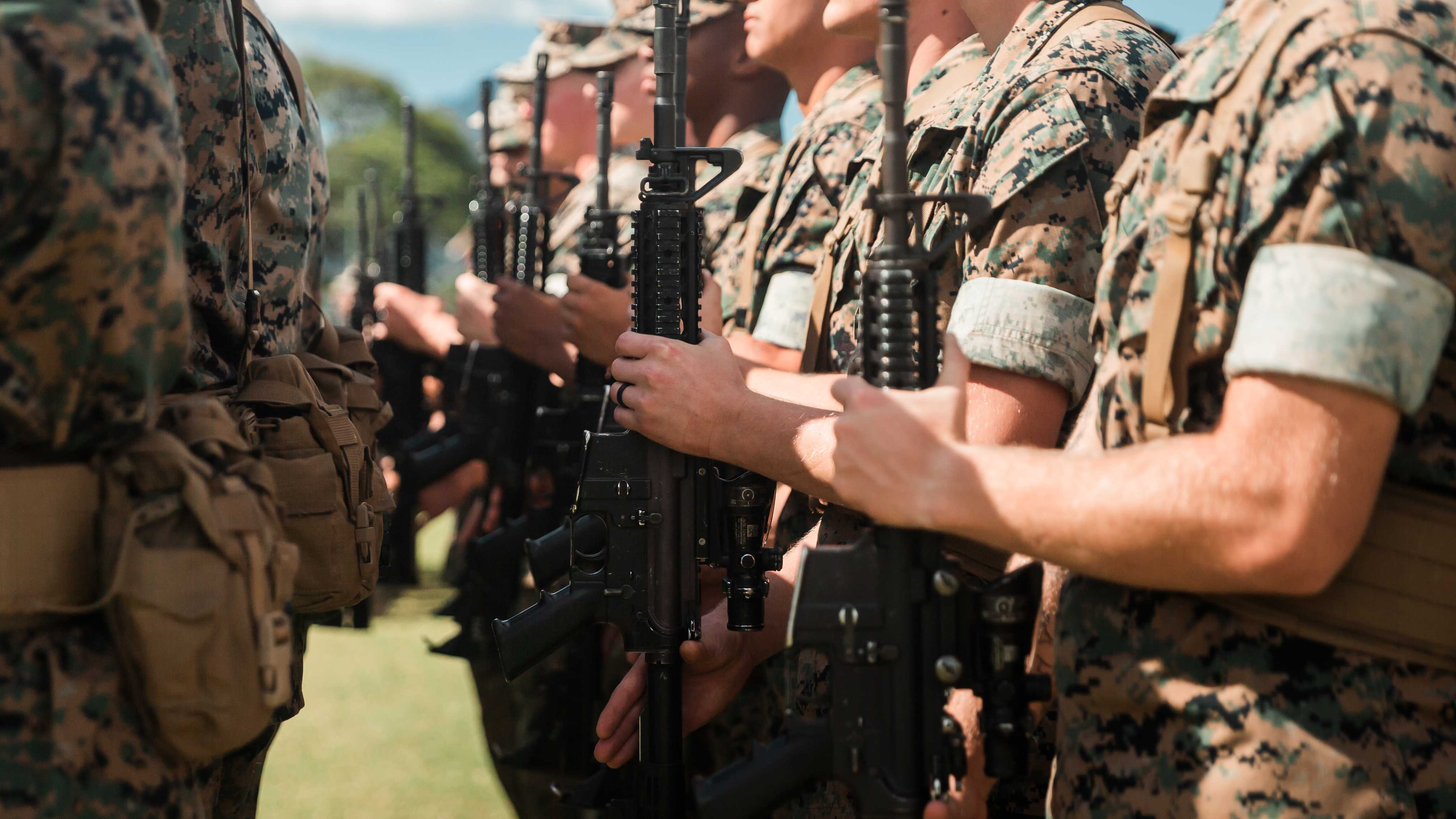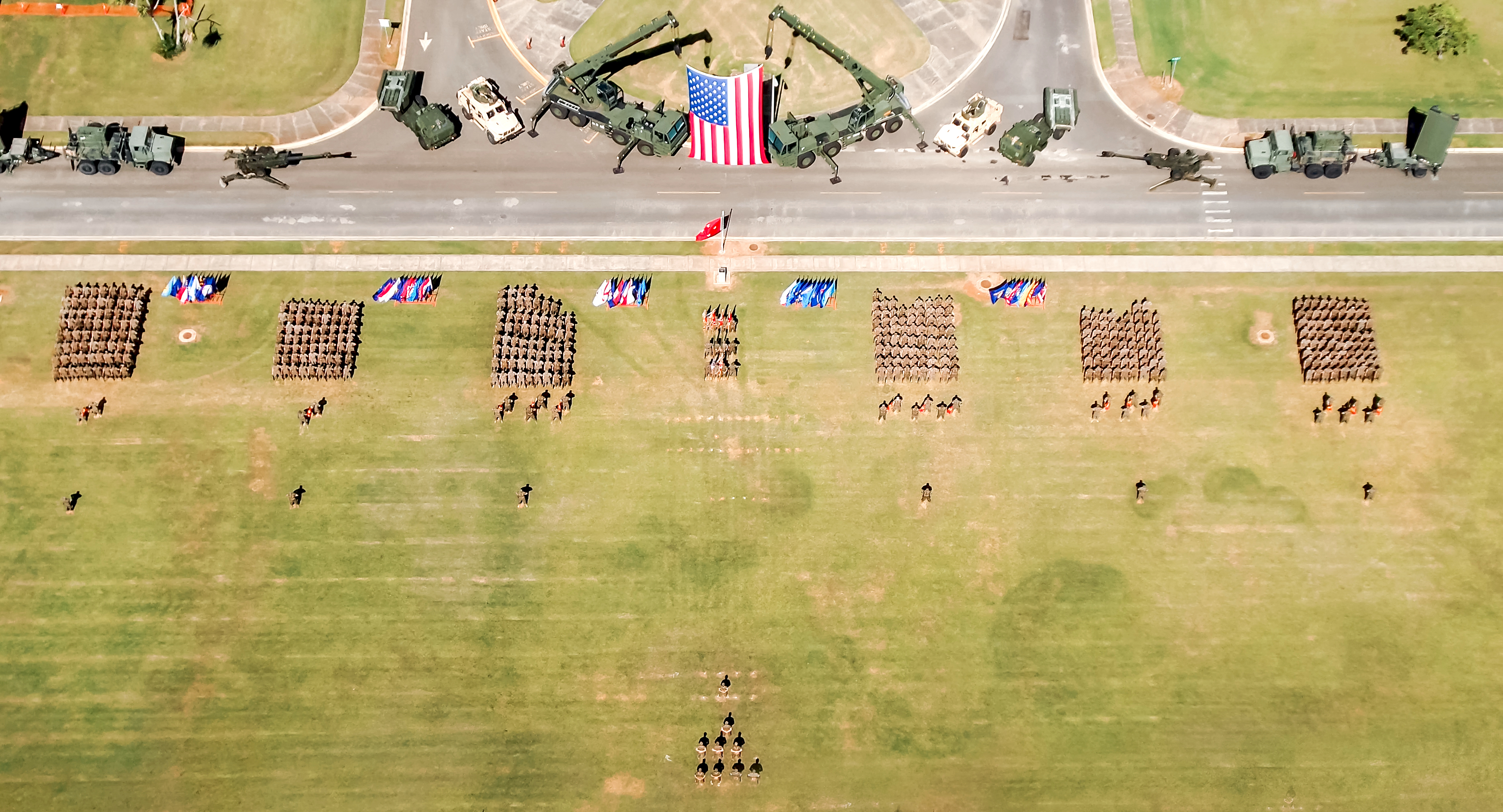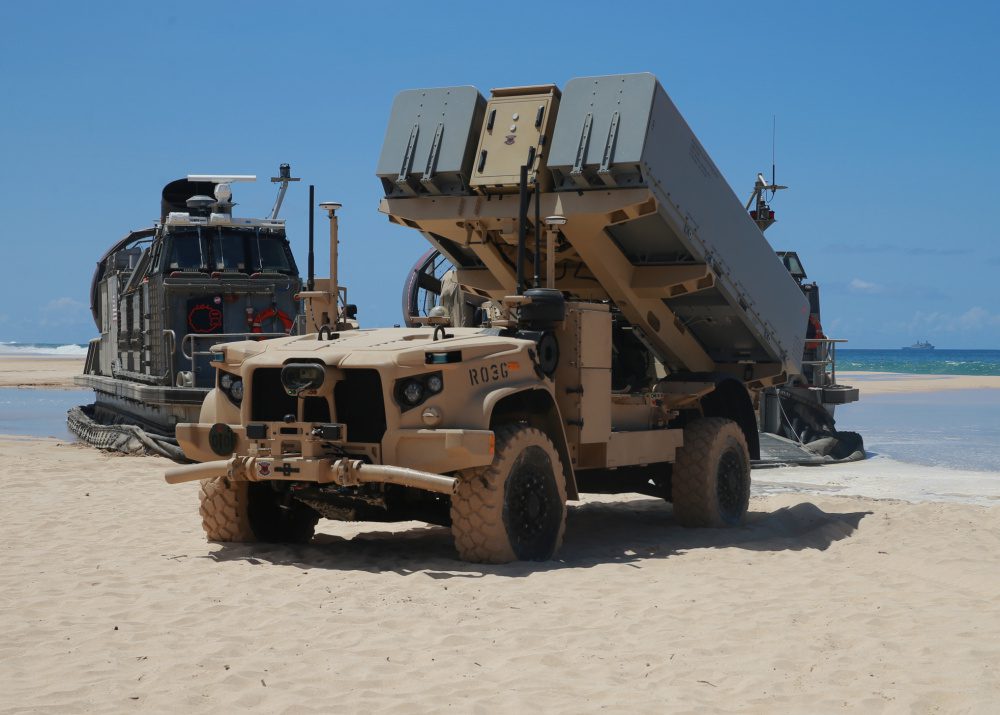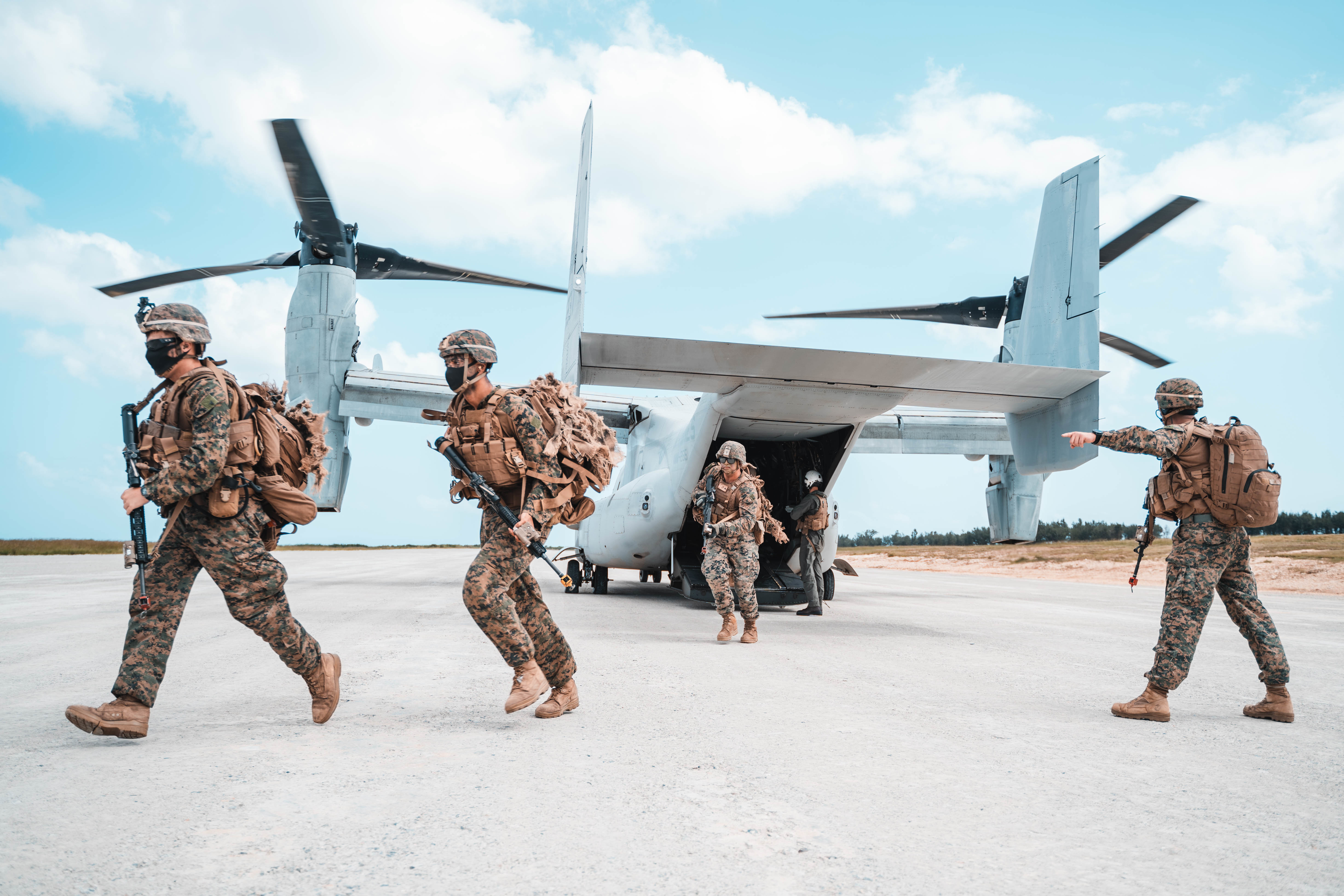
The Marine Corps this week formally converted its Hawaii-based regiment into the 3rd Marine Littoral Regiment, taking another step in the pursuit of its new island-hopping strategy in the Indo-Pacific.
As part of the service’s Force Design 2030 effort, the Marine Corps converted the 3rd Marine Regiment into the 3rd Marine Littoral Regiment in a Thursday ceremony at Marine Corps Base Hawaii.
“The concept of this 3rd Marine Littoral Regiment standing up – re-designating 3rd Marine Regiment to 3rd Marine Littoral Regiment – is a visible, physical representation of the Marine Corps’ change to outpace a pacing threat, so that we are in the best position to offer conventional [and] integrated deterrence …. in support of our National Defense Strategy,” Assistant Commandant of the Marine Corps Gen. Eric Smith told reporters earlier this week.
Military officials describe China as “the pacing threat,” and the Marine Corps’ vision for Force Design includes smaller units that could quickly move between islands and archipelagos, setting up ad-hoc expeditionary advanced bases and firing anti-ship missiles.
Part of the shift to the 3rd MLR construct includes those smaller units – about 75 to 100 Marines in an Expeditionary Advanced Base detachment – that are constantly prepared to deploy to the first and second island chains, as opposed to the historic six-month deployments.
“They are strategically placed via our organic mobility throughout the first and second island chain in order to change an adversary’s calculus,” Smith said. “Again, these units – instead of a captain who’s in charge of 175 Marines, [need] to have a captain or a first lieutenant who’s in charge of 75 Marines with a very specific task.”

The ACMC listed four capabilities the MLR needs: long-range fires – like the Navy-Marine Corps Expeditionary Ship Interdiction System (NMESIS) program that features a Naval Strike Missile mounted on an unmanned JLTV chassis; – the MQ-9A Reaper drone for intelligence, surveillance and reconnaissance; radars and communication systems like the AN/TPS-80 Ground/Air Task Oriented Radar (G/ATOR); and “organic mobility” with platforms like the Long-Range Unmanned Surface Vehicle (LRUSV) that Marines could employ with the Light Amphibious Warship and other larger amphibious ships.
“The equipment’s going to change over the years. State of the art technology will change in five years or six years, but the MLR will stay as an organization that is purpose-built to deploy immediately in small-task organized units so that its signature is such that it is not easily detectable, and yet it packs enough of a punch that the adversary has to account for it. They have to consider it because that takes pressure off the rest of the joint force,” Smith said.
While the threat will decide where the Marine Corps bases its equipment, Smith said the service also needs to adhere to the environmental and legal mandates, depending on the host nation, before choosing where the equipment will live.
But the Marines have four goals to achieve with the MLR in the Indo-Pacific by the end of Fiscal Year 2023.

“Those capabilities broadly are additional organic lift – aviation lift and I’m talking KC-130s – into the Indo-Pacific theater, long-range strike into the Indo-Pacific theater. And that means our Navy-Marine Expeditionary Ship Interdiction system, which was successfully demonstrated at last year’s Large-Scale Exercise,” Smith said.
“We have to show our long-range intelligence, surveillance reconnaissance air platform – the MQ-9 Alpha extended range – we have to introduce that into the theater in ’23. And then we have to stand up the 3rd MLR,” which is what the Marines did this week. “And that represents our ability to live, train and deploy in these small disaggregated units.”
The Marine Corps already has G/ATOR systems in Okinawa, Japan, and has experimented with LRUSV using a rigid-hull inflatable boat (RHIB) and will keep testing the use of LRUSV with ships from Metal Shark. The service is also leasing one stern landing vessel through the Marine Corps Warfighting Lab so it can use the platform for testing before 2023.
“We know what we want to do with the vehicle – there’s no doubt about the concept of employment. Now we’re talking about the specifics of beachability and exact size. that’s what the analysis of alternatives for which ship do you procure – that will determine that. But we already have a surrogate that we will lease to use for experimentation,” Smith said. “And we might additionally lease two more for a total of three because we don’t want to wait for the LAW to come online for us to then confirm – not come up with – but confirm our concept of operations.”
Smith said the 2023 timeline stems from the need to show Congress and the Defense Department that the Marine Corps has made progress on Force Design and the service’s obligations to provide capabilities to combatant commanders that can help deter an adversary.
“We can’t wait until the adversary has reached their full potential and then try to divert them, to change them. We have to change that trajectory now, meaning by the end of Fiscal Year ’23,” he said.
Adversaries, according to Smith, don’t like the Marine Corps’ strategy because of the unpredictability and maneuverability a unit like the MLR brings.
“They don’t like the fact that units are highly mobile, that they have a low signature and that they – the adversary – doesn’t know where these things are. Because we’re talking about an organization that’s 75 Marines who have organic mobility, either by air or by surface connector. And once they’re ashore, they have organic mobility in the form of Joint Light Tactical Vehicles and relatively small trucks that are inherently mobile and have capabilities to shut down a network, to strike a capital warship and then fade away and move again,” he said.
“Adversaries hate that because they don’t have effective control over their – the adversary’s – plan. So all of our assessments, wargaming and analysis say that we are on the right track. We are constantly adjusting the exact size of an infantry battalion, the exact number of missiles a unit needs to carry so that it matches our logistics capability, the exact signature that they will put out – that is constantly adjusting based on the adversary’s ability to pick up our signature.”

The current plan is for the Marine Corps to have three Marine Littoral Regiments all based in the Indo-Pacific. It will eventually convert the 4th Marine Regiment and the 12th Marine Regiment – both based in Okinawa – into MLRs. The service needs all three MLRs operating by 2030, with Smith estimating a transition for one organization in the 2025-2026 timeline and 2027-2030 for third one.
“By ‘30, we will have all three of them and what we’ll do is we will confirm with this first regiment what is exactly needed. We’ll take our time. That may mean the second MLR to stand up is a little slower than we thought, but it’ll be easier to do because we’ll know exactly what sized unit to put in there – exactly how many master sergeants, exactly how many staff sergeants, exactly how many missiles,” the ACMC said. “So all of them have to be stood up 2030, which is when we would consider the decade of uncertainty beings. You have to be ready because again the pacing threat’s moving.”
Smith acknowledged the 3rd MLR could be a little bigger than previous estimates of 1,800 to 2,000 Marines and sailors, but said the organization will be smaller than the 3rd Marine Regiment. The MLR is slated to include a Littoral Combat Team, Littoral Logistics Battalion, and a Littoral Anti-Air Battalion. Smith said the service is still working on the Littoral Anti-Air Battalion, so depending on new technologies that come online, the MLR could require fewer or more Marines and change in size over the next one to three years. But Smith said it’s unclear if that change will be a difference of 50 Marines or 300.
As the Marines perform more exercises and collect more data, the service will have the chance to hone the number.
“Changing the size of the unit every single day – you don’t do that. You might do it annually, or every two years,” Smith said. “But when there’s data sufficient to prove that we need to change, we’ll change again because the pacing threat’s always changing. They’re always moving.”





